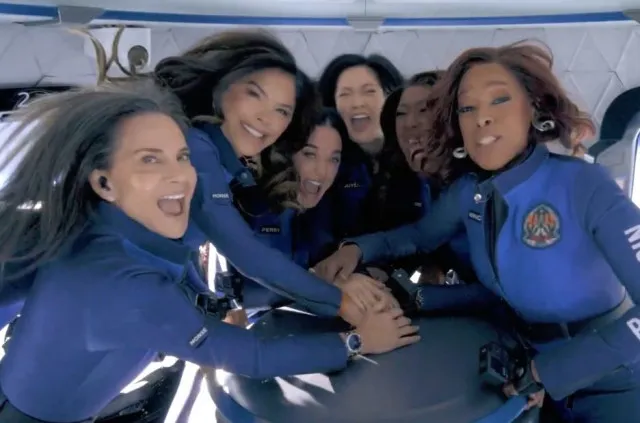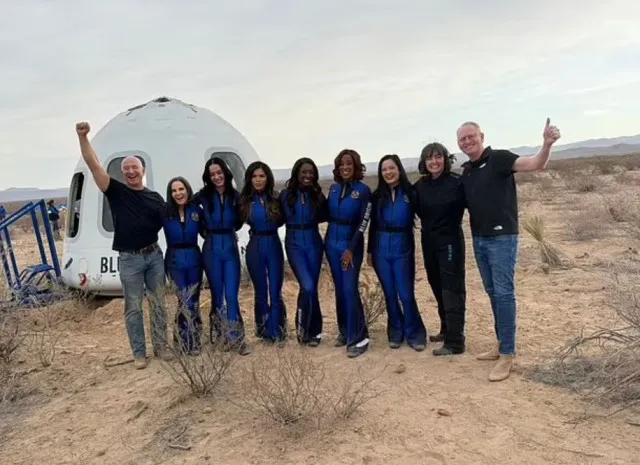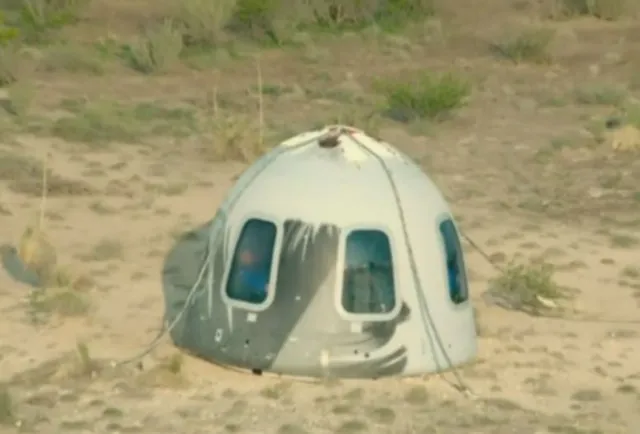Environmental experts say Jeff Bezos’ Blue Origin flight may have had a much higher atmospheric cost than the company publicly admits.
On April 14, the Jeff Bezos-founded space company successfully launched six women, including Katy Perry and journalist Lauren Sánchez, from West Texas.
This marked the first all-women crew in space since 1963.
Valentina Tereshkova had been the last solo female astronaut, launched by the Soviet Union.
Blue Origin’s celebrity space mission sparks environmental.
Blue Origin’s celebrity space sparked concerns from scientists and environmentalists.

Blue Origin’s latest mission made headlines for sending the first all-female crew into space since 1963.
The 11-minute NS-31 flight included singer Katy Perry, journalist Gayle King, and aerospace engineer Aisha Bowe.
Joining them were business leader Kerianne Flynn, scientist Amanda Nguyen, and Lauren Sánchez—fiancée of Blue Origin founder Jeff Bezos.
While the historic moment was celebrated globally, it also stirred a new wave of environmental controversy.
However, scientists and environmentalists are now pushing back on Bezos’ claim that the New Shepard rocket is a zero-emissions craft.
Experts are pushing back on Bezos’ claim about Blue Origin’s mission
Experts say Blue Origin’s rocket cannot emit only water vapor, despite Jeff Bezos’ public statements.

Previously, Jeff Bezos claimed that the New Shepard rocket only emits water vapor and leaves no carbon footprint.
However, atmospheric scientists told the BBC that this statement is “not possible.”
Dr. Eloise Marais, an atmospheric chemist, explained that high-temperature combustion occurs during rocket launches.
This process can convert atmospheric nitrogen into harmful nitrogen oxide gases, which damage the ozone layer
Even without carbon emissions, those gases are enough to raise serious environmental concerns about repeated rocket launches.
Water vapor in the upper atmosphere may contribute to global warming, scientists warn

Despite Bezos’ “green” branding, water vapor is still a greenhouse gas. Experts say the upper atmosphere isn’t where that vapor belongs.
BBC science correspondent Victoria Gill noted that rockets release emissions into layers of the atmosphere that are highly sensitive and lacking natural weather systems to cleanse them.
Because there’s no rain 100 km above Earth, the pollutants from rocket launches linger far longer than those from planes or cars.
Additionally, scientists stress that location, not quantiny, makes spaceflight emissions especially damaging
Though global aviation produces more emissions by volume, scientists say it’s not just how much pollution is released—it’s where it ends up.
Rockets pierce the stratosphere and mesosphere, depositing chemicals where natural removal is minimal. That can accelerate ozone depletion and influence global temperature patterns.
The April 14 flight lasted just over 10 minutes, with only 4 minutes technically spent in space.
However, the mission’s brief duraton dose not negate its environmental footprint.

Celebrities face backlash for supporting space tourism amid global climate crisis
Many critics, including actress Olivia Munn, called the mission “gluttonous.”
Others questioned the value of short celebrity spaceflights in a world facing severe economic and climate challenges.
While ticket prices remain undisclosed for this specific flight, previous seats on Blue Origin missions sold for up to $28 million.
As Bezos and Elon Musk continue pushing space tourism, public scrutiny of their environmental impact only intensifies.